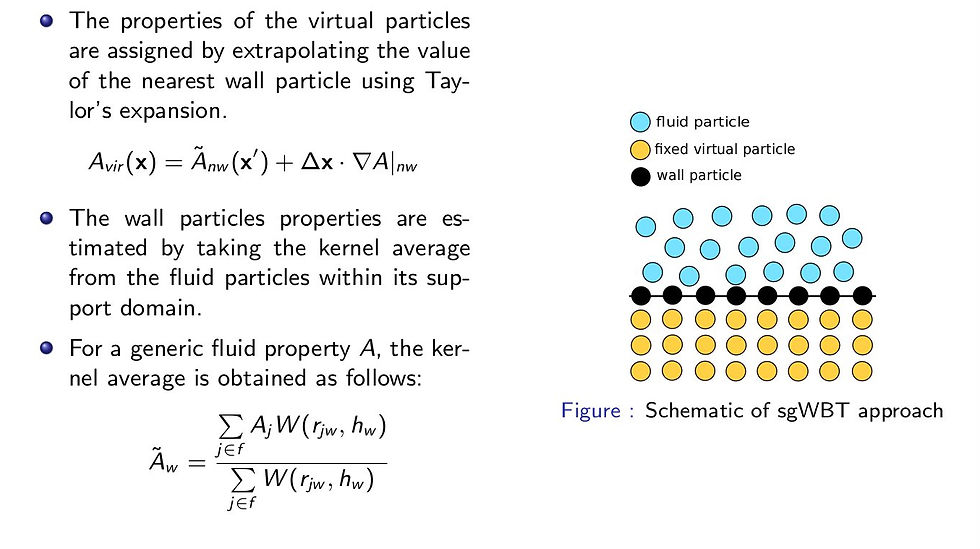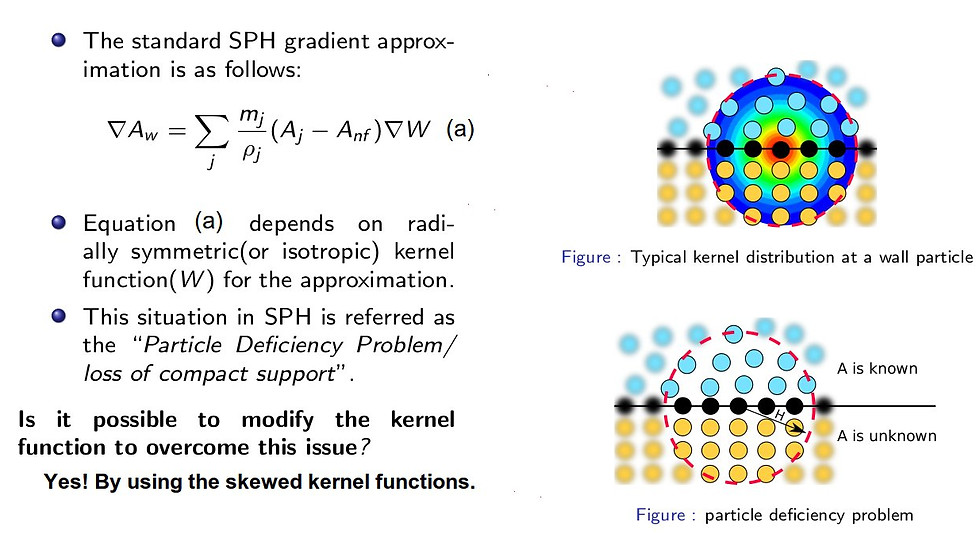Modelling the wall boundaries in the SPH framework needs special attention. Firstly, it is necessary to ensure that the fluid particles do not cross the wall boundaries (impermeability condition). Secondly, the truncation of the kernel support for the fluid particles near the boundaries affect the accuracy of the SPH approximation and therefore the associated numerical errors needs to be eliminated or minimised. While the former condition can be met relatively easily through artificial repulsive force methods, the latter requires suitable re-normalisation of the approximations or additional ghost/virtual particles to be placed in the vicinity of the boundary to account for the missing kernel support. The artificial boundary force methods (Monaghan, 1994; Monaghan et al., 2003; Monaghan and Kajtar, 2009) are seldom used as they cause undesired, non-physical flow disturbances near the boundary (Yildiz et al., 2009). The wall re-normalisation procedure originally proposed by Kulasegaram et al. (2004) and later improved by Ferrand et al. (2013) in 2D and Mayrhofer et al. (2015) in 3D, is often referred as the unified semi-analytical wall boundary treatment. Although this method is promising, the SPH equations are complicated by additional terms which significantly increase the computational time. The two different techniques which are more widely used in SPH simulations are, (a) the mirror particle and (b) the fixed virtual boundary particle methods. In the former, the fluid particles are mirrored across the boundary and in the latter, a fixed layers of particles are embedded at the boundaries. In the mirror boundary particle method, assigning fluid properties for the virtual particles is straightforward as it is mirrored from the fluid particles in the flow domain. However, this method is difficult to implement for complex flow domains. On the contrary, the fixed virtual boundary particle method can be used for modelling complex surfaces, but, requires suitable extrapolation for assigning the properties for the virtual particles.

Mirror particle technique

Fixed virtual particle technique
sgWBT algorithm:



